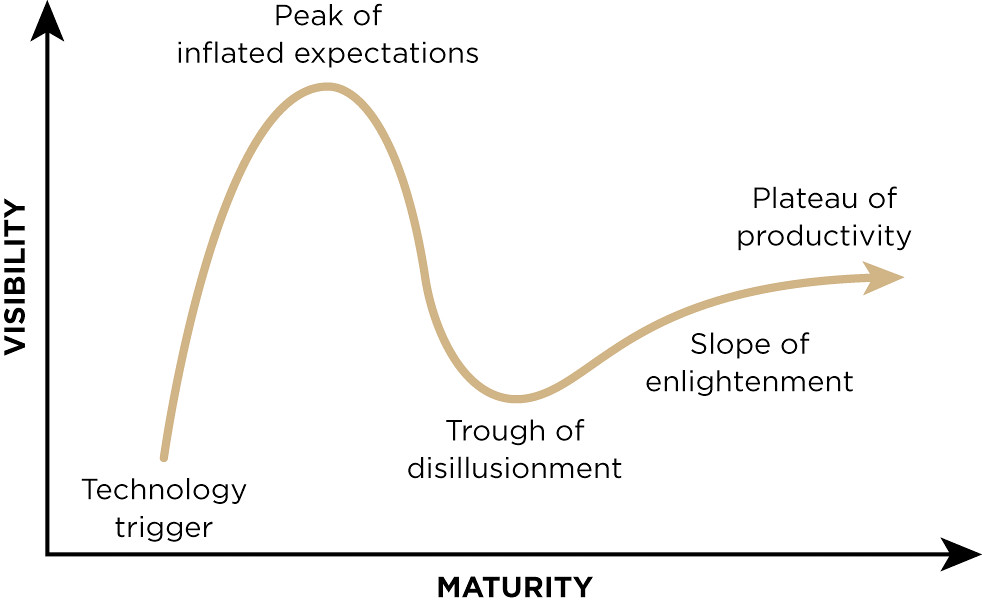From Peak Hype to Disillusionment – a Look at the Leftovers of the Design Thinking Hype
The article «Design thinking was supposed to fix the world. Where did it go wrong?» got me into thinking about the hype that’s been generated in the business world around the term Design Thinking in recent years. Many of the points made in the article pretty much match my experience with projects in this area. So why not take a moment and reflect on them a bit further? Ok, here we go.
First of All: It’s a Marketing Term
First of all, «Design Thinking» is a marketing term that has caused a lot of attention on fast and superficial thinking, much like Blockchain and AI did in the tech space. However, as we enter the post-hype phase of its lifecycle, the actual positive results may remain, while the superficial promises of quick success hopefully begin to fade out.
Positive Impact on Organizations
Stronger Focus on Customer Value & Human Centeredness
One of the positive impacts of Design Thinking on organizations is a stronger focus on customer value and human centeredness. This is an obvious goal but is often lost sight of by larger organizations. Be valuable to people and provide a service that will make their lives easier. To get there, it’s important to take the time to deeply consider the problems at hand before jumping to solutions.
The Actual Expertise Is in the Hands of Your Experts – However, Designers Can Be Great Facilitators and Storytellers for Change
The best solutions were the ones that were created by the experts with the help of designers. They were the result of intensive interdisciplinary work. Since great experts in their respective fields often do not have the ability to make a solution appealing to an organization, designers can be of great help. Storytelling to drive change is one of the most influential tools designers can contribute.
Find the Right Designers – Deep Thinkers, Passionate Communicators, and Storytellers
When assembling teams, it’s important to look for deep thinkers, passionate communicators, and storytellers who are committed to sustainable solutions that will also last over the long term.
Look out for the more quiet but empathic designers. They are often more tenacious and will stick with expert teams until the job is done. They are also committed to educating others about human centeredness in their daily thinking.
Insights for Designers
Work with the Experts – Not for Them!
Good designers do the hard work and put themselves into the shoes of their target group. To do this, they work with the experts in the solution space, question existing solutions and propose alternatives. In other words, they work with the experts, not for them. Design thinking workshops can be a good start here. But you shouldn’t stop there. Most of the real work is done after the shiny workshops, and often you need the experts of the field to drive decisions.
Step 1: Design a Solution - Step 2: Make It Happen
Designing a solid solution for a problem is just the beginning. The real challenge lies in making it a reality. Good designers are committed to the sustainability of a solution and, more importantly, the best possible way to implement it inside the organization.
To ensure your solution is implemented in the way you intended it to be, you need buy-in from the most important stakeholders and a powerful implementation team. The team should include subject matter experts who know customers inside and out, helping to design the solution as efficiently and effectively as possible.
Design thinking methods can be helpful in creating a participatory setting that will involve all the different members of your organization.
Conclusion
Design thinking was primarily a marketing term. However, due to superficial implementations with too little time, it often promoted hasty and superficial solutions. No matter what label or marketing term you stick on it, the most important ingredients for developing sustainable products remain: finding the right types of designers, involving key people and experts from the company, as well as mutual understanding, respect and, above all:
